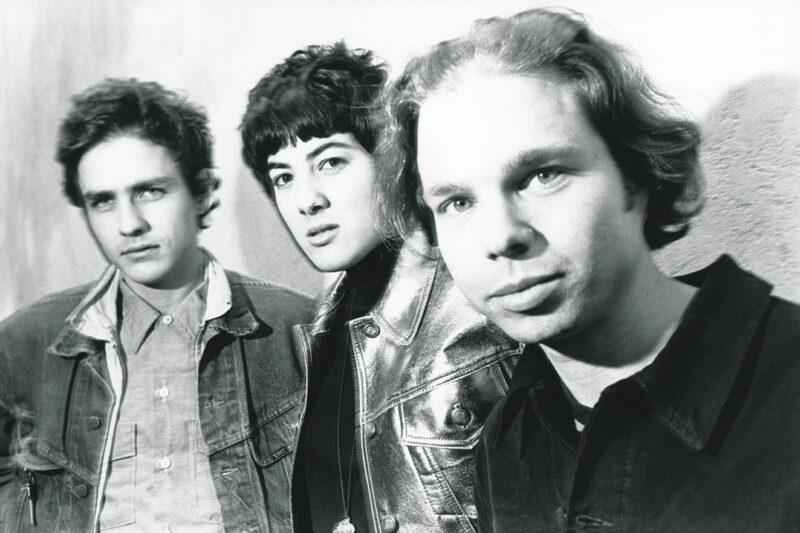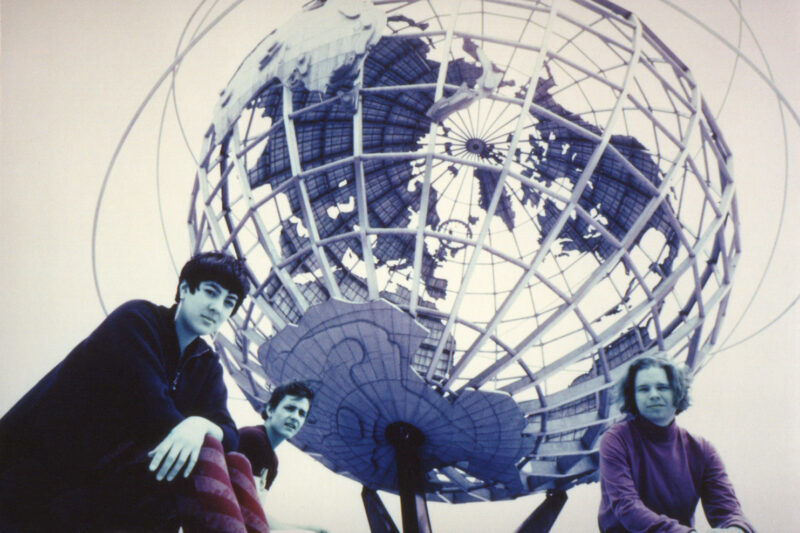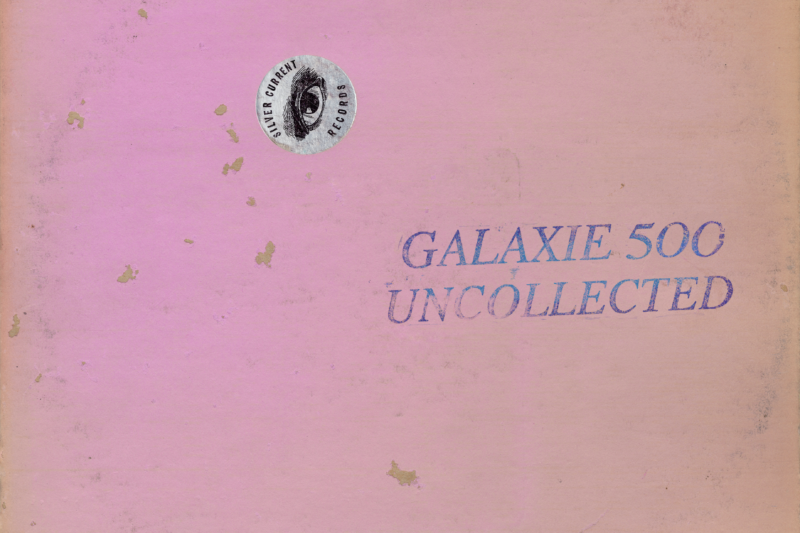Uncollected Noise New York ’88-’90 is Galaxie 500’s first release of new archival material in nearly 30 years and is their most comprehensive collection of unreleased and rare archival material ever. Its 24 tracks make up the complete Noise New York studio recordings of the band’s outtakes and non-album tracks. Compiled by the band it traces their career from among their earliest recorded moments in the studio to their last.
“Opening up these tape boxes was like looking into an old journal or datebook – I had forgotten most of this happened at all, but it only took a few quick details to put me right back in the drum seat,” says drummer Damon Krukowski. “There are songs from all the Galaxie 500 recording sessions included here.”
Uncollected Noise New York ’88-’90 isn’t just an ‘odds and sods’ collection; it is a secret history of the band told in music. When Rykodisc issued the landmark Galaxie 500 CD box set in 1996, rereleasing their three albums, they added a fourth disc of delicious extras titled Uncollected Galaxie 500. But here the restoration and inclusion of no less than eight never-before-heard studio tracks culled from sessions throughout Galaxie 500’s career, chronologically sequenced along with previously released but rare and long out of print studio material, tells an untold story of the band in full as they move steadily across the arc of their growth and creative expansion. It reveals not so much an alternate history of the band, as a different perspective of their actual history viewed from the other side of the mirror from beginning to end.
“There is a sweetness in hearing the progression of us finding our own sound, our own collective voice. The Proustian power of music,” explains bassist Naomi Yang. “Listening to these early recordings I can hear myself figuring out how I wanted to play bass – finding my way up the neck to where the notes would cut through, where there could be a counter-melody to the singing. Making the bass my singing voice.”
37 years ago in New York City, Galaxie 500 strummed unassumingly into existence in the summer of 1987, shortly before relocating back to Boston, the city they would forever after be associated with. Three friends and Harvard schoolmates– Damon Krukowski (drums), Naomi Yang (bass and vocal), and Dean Wareham (guitar and lead vocal)– began feeling their way through open-ended musical expression without a strict template beyond their lofty and often esoteric tastes and influences. The fuse of a short, but momentum-filled career, was lit almost as soon as the band had begun. To fans and critics alike, the chemistry was intoxicating.
“It was stunning, a room packed with people who were silently intent on this band playing slow, quiet, beautiful music,” remembered Mark Lanegan describing the impact that seeing Galaxie 500 for the first time had on his own artistic direction. “At the end of each tune the crowd erupted in enthusiastic cheering, then became stone silent again as soon as the band delicately began their next song. It had never occurred to me that it was possible to play quietly in a rock club and people would enjoy it. It was an epiphany for me to witness… one of the all-time great bands.”
When Galaxie 500 went into the studio in February 1988 to record their debut single Tugboat/ King of Spain they fatefully came into the capable hands of eccentric and unpredictable producer, engineer and Shimmy Disc label boss Kramer, at his Manhattan studio Noise New York.
“Recording at Noise New York with Kramer was an intense experience. The studio was in a TriBeCa loft, across the hall from Kramer’s apartment. Dark and windowless — bare of anything except instruments and gear — it was a hothouse,” remembers Yang. “It was like stepping into a tropical greenhouse when it is winter outside. The shock was not a temperature change, but a change in emotional pitch.”
Kramer perfectly captured the band’s raw chemistry and naturalism, often in one take only (two allowed at the most!), keeping the songs free of cluttered studio artifice and polish yet successfully presenting the music as larger than life, artful and cinematic. With Kramer, Galaxie 500, already plenty endowed with chemistry and vibe, had found their ‘sound’ and would work exclusively with the producer at Noise New York until the band’s final recording session in June of 1990.
“Our sessions at Noise New York were lightning fast, the three of us recording basic tracks together live, same as a performance. Kramer wanted to include many of these recordings on our albums,” continues Krukowski. “Collecting the old tapes for transfer, I found cassettes with Kramer’s suggested running order for both On Fire and This Is Our Music, each padded with tracks we held back for B-sides, or buried till now.”
At Noise New York Galaxie 500 recorded three classic albums in three years, each gaining the band more momentum and opportunity. They kept a brisk touring pace both domestically and internationally and in April of 1991 they broke up and the ride was suddenly over. In the years and decades that followed their dissolution they’ve continued to cast a long, undiminished shadow over indie music.
“I saw them and was struck by their mellifluous minimalism and swooning ‘verb-drenched slather tone,” said Thurston Moore in 2020. “Of course, they were already classic and, of course, they would, and will, always remain one of the best, most remarkable bands from a time when being noisy, aggressive, amped up, and skuzzy was the prescription of the day — Galaxie 500, in some otherworldly way, brought us back to Earth so we could recalibrate and soar anew.”
Uncollected Noise New York ’88-’90 opens with “Shout You Down” (previously unreleased) from their first Noise New York session in ’88, a bottle rocket of a track and the fastest tempo of any Galaxie song in their full repertoire, particularly poignant for a band that would go on to be one of the major touchstone influences of the so-called slowcore movement that followed them in the ‘90s and beyond.
“‘Shout You Down’ celebrates a 1983 incident at Harvard University, a month after the U.S. invasion of Grenada, when Defense Secretary (and later Iran-Contra indictee) Caspar Weinberger was invited to give a talk on diplomacy, only to be met with boos, fake blood and heckles by half the audience; students and outside agitators both,” says Wareham. “I confess I was there with a couple of teenage Trotskyist friends, and the following week we were called into the Dean’s office for a stern talking to, as if we were responsible for the whole debacle. At least I got a song out of it.”
In the swagger and pop of “See Through Glasses” (previously unreleased) also from the February ’88 session, there is a certain druggy grooviness and uptempo anthemic burst that Galaxie 500 would quickly leave behind as they headed down other paths to their signature aesthetic, but one can hear a fascinating, raw foreshadow of the coming Britpop zeitgeist just around the corner in this track.
Not all tracks herein are paradoxical joyrides against Galaxie 500’s signature sound. The spare delivery and unselfconscious crooning of “I Wanna Live” (previously unreleased) and “I Will Walk” (previously unreleased) both from the February ’89 On Fire album sessions have all the familiar elements of their most highly lauded and beloved album.
“I can see why we left some of these songs in the vaults, but there is pleasure in hearing them today; they sound very alive, like Galaxie 500 playing in the brick-walled room that was Noise New York,” concludes Dean Wareham.
Uncollected Noise New York ’88-’90 is first and foremost a treasure chest of the sound and history and time and place of Galaxie 500 and Noise New York, brimming with music that is joyful and sad, unexpected yet familiar, minimal but beautiful, at times a bit raw and of-its-moment, uncollected but essential.
Uncollected Noise New York ’88-’90 releases September 20, 2024 on 2xLP, 2xCD and 2xTape on Silver Current Records and digital on 20/20/20..


